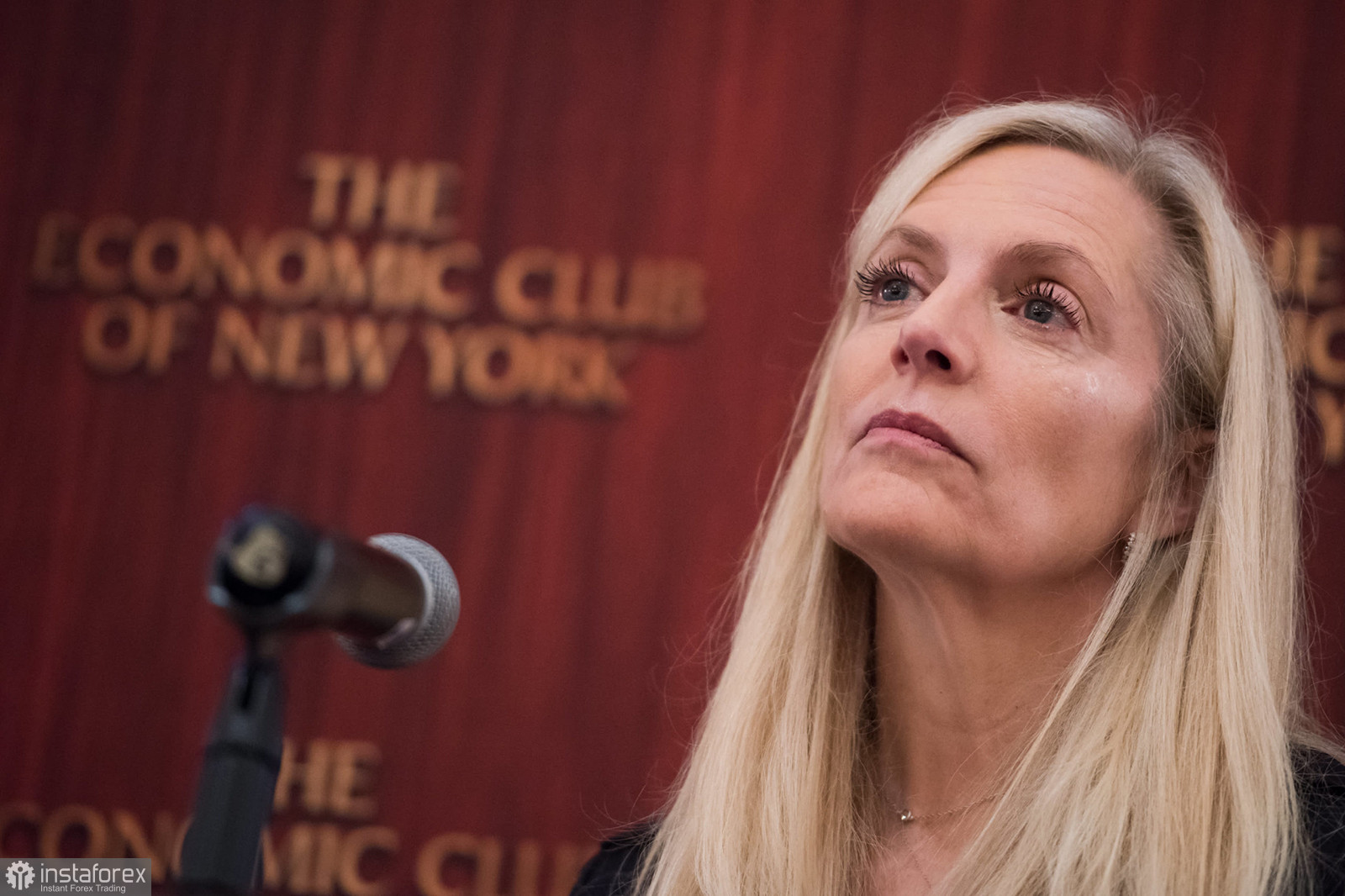
As we have already said, a whole series of speeches by Fed representatives took place this week. Among them were such well-known faces as Jerome Powell, Raphael Bostic, Patrick Harker, and James Bullard. However, there was a speech in the Senate and the future vice-chairman of the Fed Lael Brainard. Recall that Lael Brainard was nominated by US President Joe Biden and for a long time there were rumors that she would become the new head of the Fed. However, according to many experts, Biden made a "Solomon's decision" and did not change the head of the regulator in such difficult times for the economy, "putting" his person to him at the same time. True, now both Powell and Brainard must be confirmed in their positions by senators, but, as practice shows, there are unlikely to be problems with this. It was on the occasion of her appointment to a new post that Lael Brainard spoke in the Senate on Thursday. Unlike her colleagues, she stated bluntly that the fight against rising inflation is the number one goal for the Fed in the near future. Brainard has been a member of the Fed's governors since 2014 and previously she held a rather "dovish" position. In particular, she opposed an early tightening of monetary policy in order not to disrupt the economic recovery process. It is all the more remarkable that the "dove" is currently in favor of tightening and does not hesitate in expressions. "Given rising inflation, workers across the country are concerned about whether their salaries will be enough for them," Brainard said in the Senate. "Our monetary policy will be aimed at returning inflation to 2.0% while maintaining the recovery of economic growth," the future vice president added.
"The Fed is ready to raise rates to reduce the size of consumer demand, which should lead to a slowdown in price growth," Brainard continued at the hearing, "We have a set of necessary tools to achieve a reduction in inflation." A little less aggressive was the speech of the chairman of the Federal Reserve Bank of San Francisco Mary Daly. She noted that she does not want to run far ahead and predict several rate hikes, but fully supports the decision to raise in March. Ms. Daly also said that the current monetary policy is balanced and "does not lag and does not get ahead of events." She also noted that it could take most of 2022 to restore the balance between supply and demand, which was disrupted due to rising energy prices and disruption of supply chains. As you can see, most of the Fed governors fully support at least three increases this year. And this means that in any case, the pressure on risky assets will be throughout the current, and maybe next year. Even more, pressure may begin when the Fed starts unloading its balance sheet, which is already almost $ 9 trillion.
 English
English 
 Русский
Русский Bahasa Indonesia
Bahasa Indonesia Bahasa Malay
Bahasa Malay ไทย
ไทย Español
Español Deutsch
Deutsch Български
Български Français
Français Tiếng Việt
Tiếng Việt 中文
中文 বাংলা
বাংলা हिन्दी
हिन्दी Čeština
Čeština Українська
Українська Română
Română

